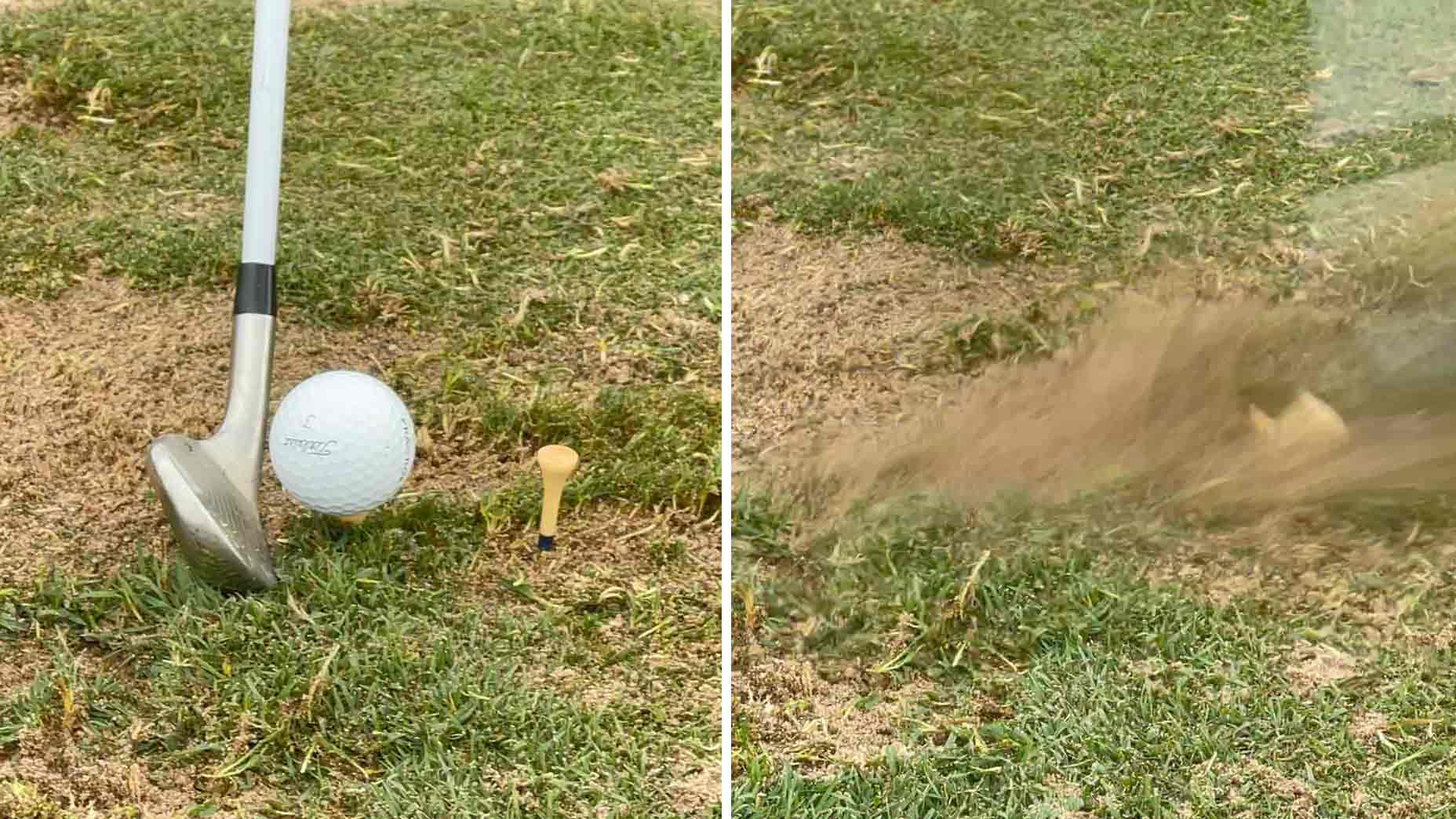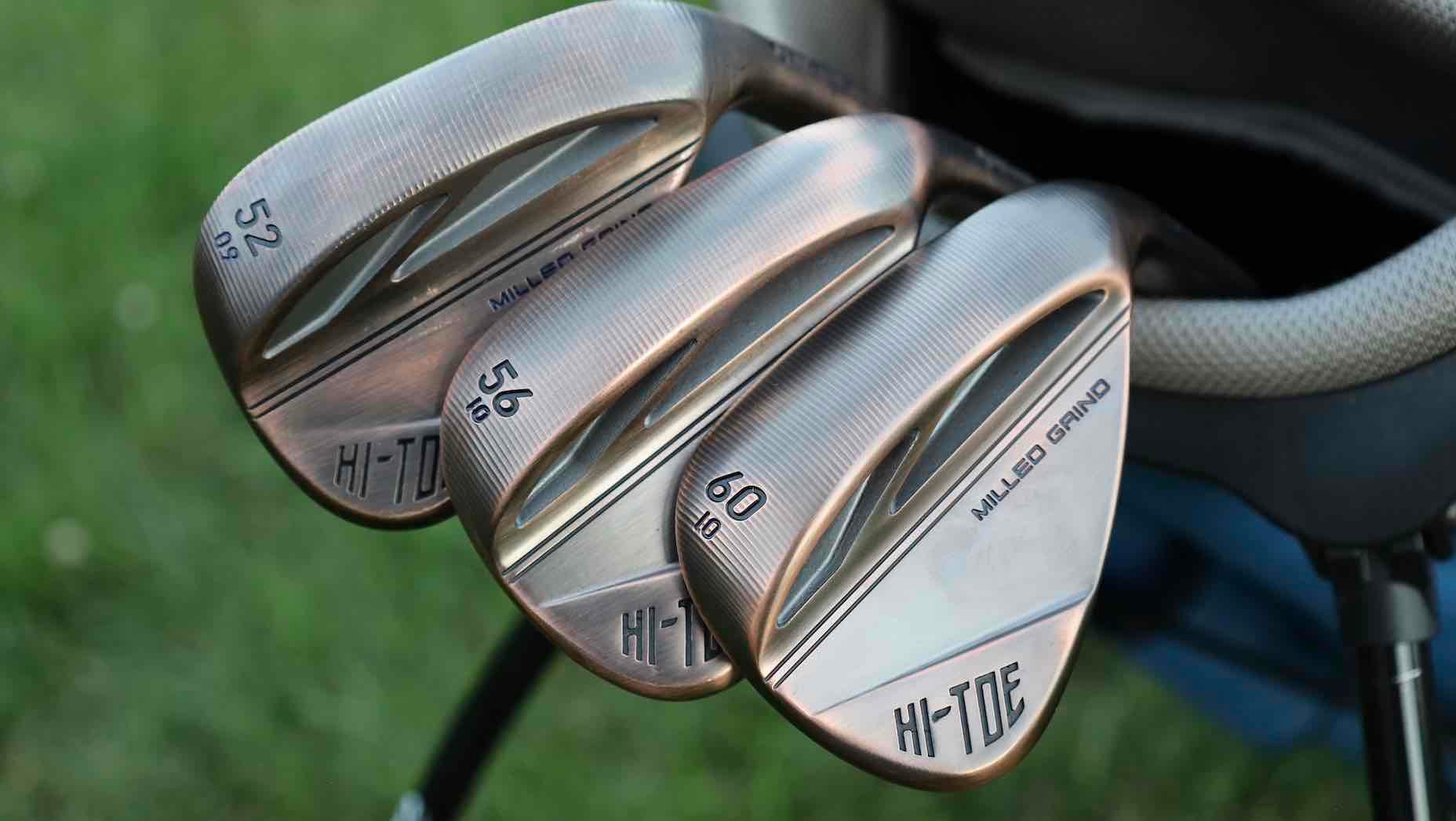Gear: TaylorMade Hi-Toe 3 wedges
Price: $179 each with KBS Hi-Rev 2.0 shaft and Lamkin Crossline 360 Round grip.
Specs: Cast 8620 stainless steel with raw-steel hitting area and milled sole. Even lofts from 50 to 60 degrees.
Who it’s For: Golfers looking for increased spin and a larger hitting area on open-faced shots around the greens.
The Skinny: With a high-toe design and raw hitting area that has raised microgrooves, TaylorMade’s newest wedges were made to allow golfers more short-game versatility and increased spin.
The Deep Dive: Last summer, TaylorMade released the Milled Grind 3 (MG3) wedges designed to appeal to golfers who prefer a traditional-looking short-game tool, and the company has offered other styles of wedges for years. The most popular of those clubs has been 2018’s Milled Grind Hi-Toe, a copper-finished wedge with (as the name implies) a higher toe section to go along with a CNC-milled sole design. Over the years, several notable TaylorMade staff players have used the Hi-Toe wedges, including Dustin Johnson and Rory McIlroy. With the release of the new Hi-Toe 3 wedges, TaylorMade brings some of the features of the MG3 to the high-toed world.
The Hi-Toe 3 wedges come with a sticker that protects the raw steel face from air and water before use. (David Dusek/Golfweek)
Offered as a gap, sand and lob wedge, the Hi-Toe 3 is cast from 8620 stainless steel for a softer feel at impact, and the clubs have a copper-toned finish that gives them a vintage look.
As with the MG3, each Hi-Toe 3 comes with a sticker that covers the hitting area that should be peeled off after you buy the club. The sticker keeps air and moisture off the face, which is raw steel and slowly will rust after exposed. In time, the hitting area’s coloration will match the rest of the club.

The Hi-Toe 3 wedges have micro-ribs between each of the grooves. (David Dusek/Golfweek)
The face was designed with TaylorMade’s ZPT Raw grooves, along with a series of micro-ribs between each of the grooves. The ribs lift upward and help increase surface roughness and friction, especially on shorter chips and pitch shots.

The sand wedges and lob wedges have grooves across the entire hitting area. (David Dusek/Golfweek)
On the gap wedges (50 and 52 degrees), the groove pattern mimics what you see on irons, stopping short of the toe area. On sand wedges and lob wedges (54 degrees to 60 degrees), the scorelines cover the entire hitting surface. Why? Gap wedges are essentially an extension of your irons and typically are used from the fairway and rough on fuller shots. Sand wedges and lob wedges are often hit closer to the hole when you might open the face and make contact in different parts of the hitting area.

The weight pad at the top of the toe and hollowed areas shift the center of gravity upward. (David Dusek/Golfweek)
Behind the face at the top of the toe area is a small weight pad. Combined with the hollowed-out portions in the lower-back region of the club, it helps elevate the center of gravity, which should help golfers flight their pitch shots and fuller-swing approach shots lower for increased control.
The sole of the Hi-Toe 3 has not changed. It has a four-way cambered shape created by running a computer-controlled, high-speed milling bit back and forth over the bottom of the club. Each pass shaves a small amount of steel and leaves a thin line, and the milling process helps ensure the exact shape designers intended is created on every wedge.








